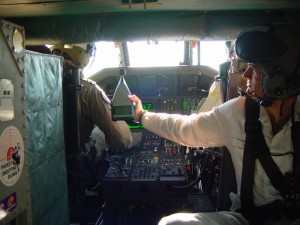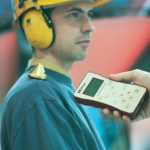Haztek provide workplace noise monitoring services for manufacturing, construction, mining, maritime, commerce and education industries
Our workplace noise monitoring services include:
- Workplace Noise Monitoring and Assessment;
- Personal Noise Exposure Monitoring (Dosimetry);
- Noise Exposure Assessment;
- Noise Management Programs (Hearing Conservation Programs);
- Risk Assessment and Prioritisation of Noise Control Measures;
- Design and Implementation of Noise Engineering Controls;
- Selection of suitable Personal Hearing Protection.
Effective noise management requires assessment of noise levels and workers exposure, engineering noise control, personal protective equipment, audiometric testing (hearing tests) and worker training.
Workplace noise monitoring is conducted to determine workers noise exposure for comparison against the noise exposure standards. For further information on the Queensland Noise Exposure Standards click here.
Workplace noise monitoring services are provided by our qualified occupational hygienists using accredited state-of-the-art sampling and analysis methodologies.
Workplace Noise Assessments are conducted to meet the requirements of the AS1269.1: 2005 Measurements and Assessment of Noise to assist clients in meeting the requirements of the Queensland WHS legislation.In most situations the noise assessment involves a combination of personal exposure measurements and noise level measurements for plant and equipment. Where required noise contour maps can be developed.
Emphasis is placed on ensuring appropriate consultation is undertaken with our clients to ensure that the strategies developed are practical, can be readily implemented and will be owned and understood by operational personnel.
Workplace Noise Monitoring Equipment
For personal exposure monitoring (dosimetry) we use noise badges, the badge is small and light, with no cable or controls and mounts comfortably on the worker’s shoulder. The noise badges are left on the worker, storing details about the noise levels throughout the day. Intrinsically safe noise monitoring equipment is available for assessment in hazardous environments. All sound level meters used are integrating type 1 meters with octave band analysis capabilities. Our noise monitoring equipment is NATA calibrated.
Workplace Noise Assessment Report
Our reports are written in plain English to address all the issues raised as part of the scope of work. Our reports include an executive summary, process description, methodology, results and recommendations. Short term and long term recommendations on control measures are provided to assist managers in the provision of a safe work environment.
Review of a Noise Assessment
The period between noise assessments should be determined by management in consultation with workers through consultative processes. The noise assessment should be repeated at intervals not exceeding five years or whenever there is:
- Installation of new or removal of machinery.
- A change in workload or equipment operating conditions likely to cause a significant change in noise levels.
- A change in building structure likely to affect noise levels.
- Modification of working arrangements affecting the length of time workers would spend in high noise areas.
Workplace Noise Exposure Calculator
Haztek have developed a noise exposure calculator program. The calculator assists in the estimation of noise exposure for selected daily routines. This allows assessment of exposures that are not assessed through personal noise exposure measurements. A copy of the noise exposure calculator program is provided to the client with all noise monitoring.
For further information on how we can assist you with workplace noise monitoring services call our office or use our contacts page to forward a request for further information.
Servicing Sunshine Coast, Brisbane, Gold Coast, Bundaberg, Gladstone and Regional Queensland
Haztek News
Workplace Noise Exposure and the Queensland Noise Legislation – Mar 2013
Workplace noise-induced hearing loss is still a major compensable disease in Queensland workplaces. Noise-induced hearing loss is caused by excessive noise in the workplace. A worker may have an entitlement to compensation for hearing loss if their employment was a significant contributing factor causing the loss of hearing.
The Queensland Work Health and Safety Act 2011 places responsibility for managing workers health and safety risk on the ‘persons conducting a business or undertaking’ (PCBU). The WHS Regulations 2011 detail responsibilities for the PCBU to ensure noise exposure does not exceed the exposure standard and to provide hearing tests for certain workers.
In Queensland noise is prescribed in Part 4.1 of the Work Health and Safety Regulation 2011. For this standard excessive noise is a level of noise above an 8-hour equivalent continuous A-weighted sound pressure level (LAeq,8h) of 85dB(A) and a C-weighted peak sound pressure level exceeding 140 dB(C). The LAeq,8h represents a steady noise which, if averaged over 8 hours, equates to a daily noise exposure.












